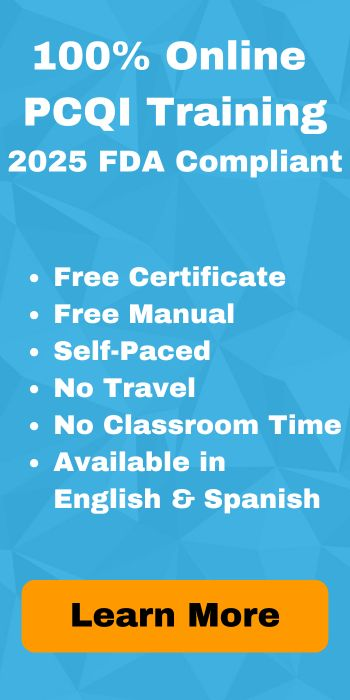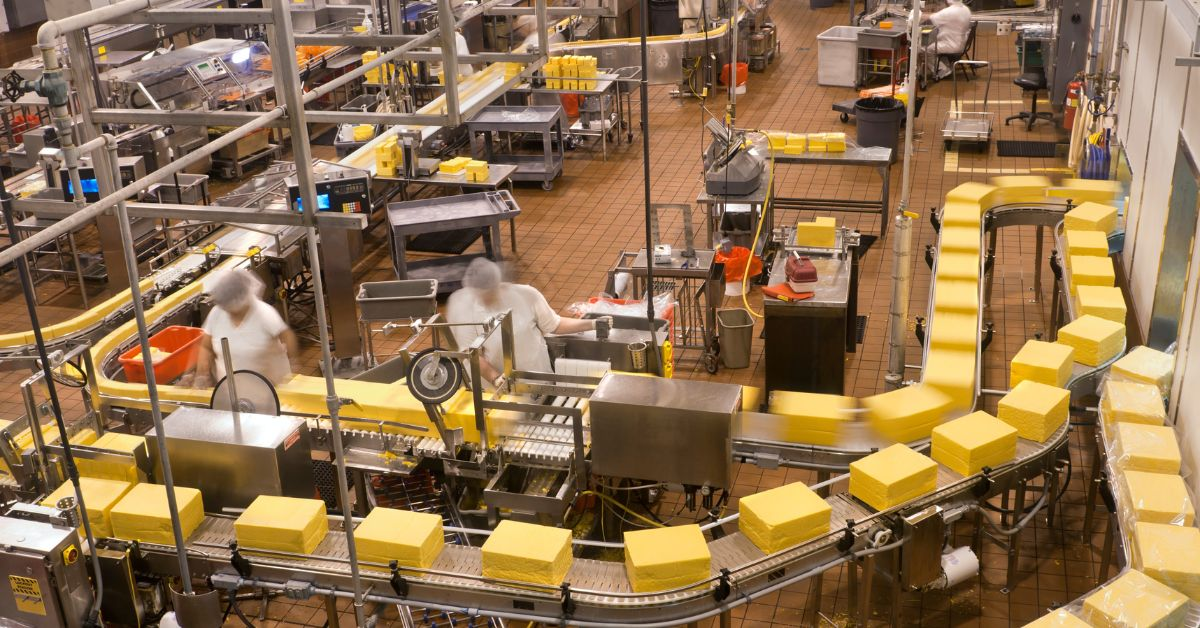
Food safety training plays a crucial role in protecting the public and ensuring the safety of production. Yet many food manufacturers struggle with the same frustrating problem: training that fails to make an impact. Employees forget what they learn. Mistakes continue. Violations show up in audits. In most cases, the issue isn’t the message. It’s how the message is delivered.
Poor training delivery leads to poor food safety practices. The good news is that online, interactive PCQI training from ImEPIK® can solve this issue by boosting both engagement and retention. Research-based instructional methods make the difference in employee competency.
What Are the Causes of Poor Food Safety Practices?
The most common cause is simple: employees don’t fully understand the risks or how to prevent them. Why? Because traditional training often includes unclear content, rushed sessions with little time for practice, or generic lectures that fail to engage.
Other issues include:
- Language and literacy barriers
- Infrequent or one-time training events
- Lack of role-specific or food sector-specific scenarios
When training fails to connect with workers, safety mistakes happen.
What Are the Five Most Common Risk Factors for Food Safety?
The Centers for Disease Control and Prevention (CDC) identifies five key food safety risk factors:
- Improper holding temperatures – Food kept too warm or too cold can grow harmful bacteria.
- Poor personal hygiene – Dirty hands or illness can spread contamination.
- Inadequate cooking – Undercooked products may not kill pathogens.
- Contaminated equipment – Dirty tools or surfaces carry bacteria across batches.
- Unsafe food sources – Ingredients from unreliable suppliers increase risk.
Each of these risks can be prevented if employees understand the “why” and “how.” That requires training that goes beyond basic checklists.
Why Traditional Food Safety Training Falls Short
Standard training often means sitting through a one-time class or watching videos that don’t change behavior.
Here’s what usually goes wrong:
- Low engagement: Passive formats fail to capture attention.
- No retention: Without practice and critical thinking assessments, employees forget most content quickly.
- One-size-fits-all: Different food sectors need different training to cover hazards in their respective processes, but that’s rarely offered.
- No feedback loop: Without different types of assessments or checkpoints, you can’t measure learning.
These problems lead to unsafe practices and missed audit marks.
What Is the Biggest Threat to Food Safety?
Human error is the top threat in most food facilities. When workers don’t know or don’t remember how to handle food safely, mistakes occur. Those mistakes can lead to failed inspections, product recalls, or harm to customers. Training that sticks is the best prevention.
How ImEPIK® Fixes the Problem with Interactive PCQI Training
ImEPIK’s online PCQI training solves the common training failures with an engaging, easy-to-use platform.
Key features include:
- Interactive learning: Employees don’t just read, they respond, decide, and apply skills.
- Scenario-based modules: Real-world food safety situations for different food sectors make learning practical and memorable.
- Self-paced structure: Workers can learn at their own pace, without disrupting production.
- Built-in assessments: Practice exercises, assessments and knowledge checks ensure concepts are understood.
- Progress tracking: Managers can monitor who completed training and how they performed.
Whether you’re training a new Preventive Controls Qualified Individual or refreshing a seasoned team, ImEPIK® improves how your facility handles food safety.
What Is the PCQI Certification Cost?
Companies often ask about the price of PCQI certification. For clarity, there is no official PCQI certification. A PCQI certificate of completion is included when you successfully complete the course. We offer competitive pricing with no travel required. You save money on lost work hours, classroom fees, and instructor travel.
Many companies also qualify for group discounts when enrolling multiple employees. You can find more details about the PCQI certification cost* on our FAQ page.
Why More Companies Are Choosing Online PCQI Training
Food safety managers, HR leads, and QA professionals are shifting to digital training. Why? Because it works better and fits modern workforces.
Benefits include:
- Fewer scheduling issues
- No travel costs or classroom rental
- Quicker onboarding for new hires
- Exceptional learner support and customer service
- Measurable results and better audit prep
ImEPIK®’s PCQI course is 100% online, mobile-friendly, and available anytime.
Fix the Root of Food Safety Failures
Food safety issues don’t start with broken equipment or dirty kitchens. They usually start with people who were never appropriately trained. Poor training causes confusion, mistakes, and violations. Fixing this problem means using a training solution that helps workers understand, retain, and apply what they learn.
We provide this solution through online, interactive PCQI training that is tailored to real-world food production jobs. Ready to improve your food safety program and reduce risk? Start your PCQI training with ImEPIK® today.
*While the FDA does not offer a specific PCQI certification, they do recognize certain training programs as meeting the requirements for PCQI qualification. These training courses cover the principles of risk-based preventive controls and the requirements of the Human Food Rule under FSMA, or the Food Safety Modernization Act. Successfully completing the FDA-recognized curriculum – like that in ImEPIK’s PCQI Online© training course – is the most common way to become a qualified PCQI.







